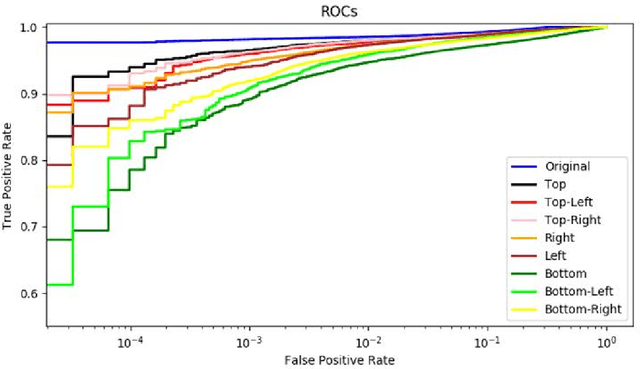Towards End-to-End Neural Face Authentication in the Wild -- Quantifying and Compensating for Directional Lighting Effects
Paper and Code
Apr 08, 2021



The recent availability of low-power neural accelerator hardware, combined with improvements in end-to-end neural facial recognition algorithms provides, enabling technology for on-device facial authentication. The present research work examines the effects of directional lighting on a State-of-Art(SoA) neural face recognizer. A synthetic re-lighting technique is used to augment data samples due to the lack of public data-sets with sufficient directional lighting variations. Top lighting and its variants (top-left, top-right) are found to have minimal effect on accuracy, while bottom-left or bottom-right directional lighting has the most pronounced effects. Following the fine-tuning of network weights, the face recognition model is shown to achieve close to the original Receiver Operating Characteristic curve (ROC)performance across all lighting conditions and demonstrates an ability to generalize beyond the lighting augmentations used in the fine-tuning data-set. This work shows that an SoA neural face recognition model can be tuned to compensate for directional lighting effects, removing the need for a pre-processing step before applying facial recognition.
 Add to Chrome
Add to Chrome Add to Firefox
Add to Firefox Add to Edge
Add to Edge